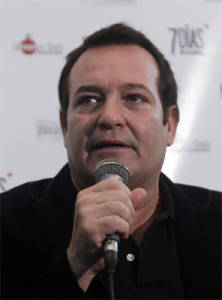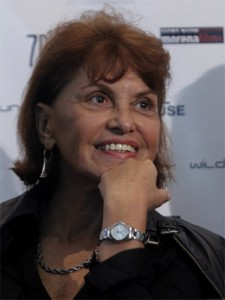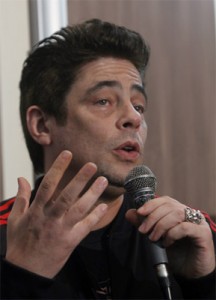Seven Looks at Havana, Cuba
By Irina Echarry, photos: Jorge Luis Baños

HAVANA TIMES, Dec 14 — The Cuban capital was the location selected by Benicio del Toro to evolve stories under the eyes of seven filmmakers, each from a different country: Elia Suleiman (Palestine), Pablo Trapero and Gaspar Noe (Argentina), Julio Medem (Spain), Juan Carlos Tabio (Cuba), Laurent Cantet (France), and Benicio del Toro himself (Puerto Rico).
The result of the project (still unfinished, in its post-production stage) was screened on Saturday, December 10, at the Chaplin Cinema with a favorable reception by the capital’s public.

It consists of a week told in seven short films, titled “7 Days in Havana.”
The Yuma. On Monday a yuma (a foreigner) arrives in Havana to study at the film school, but before starting he goes on a journey through the nocturnal life of the city.
Jam Session. On Tuesday, a film director (Kusturica) is supposed to receive an award. He spends the time drunk since his family situation is somewhat problematic. He prefers to leave with a taxi driver who he later discovers to be an excellent trumpeter as they become friends.

Diary of a Beginner. Under the perplexed gaze of Elia Suleiman, a Palestinian in Havana expecting to be received by the president, is the film that takes place on Wednesday. Gradually, watching the absurdity of the city but unable to communicate with people due to the language barrier, he tries to understand the reality that surrounds him without being left confounded.
La Tentacion de Cecilia (Cecilia’s Temptation). On Thursday a sentimental story unfolds. Cecilia is seduced by a Spanish man who comes to see her every night at the club where she sings. But Cecilia has a partner: a washed up baseball player. This is a story that intertwines love, desire and compassion.

El rito (The rite). After a period of lesbianism in the life of a teen, her parents decide to perform a purification ritual one Friday.
Dulce Amargo (Bitter Sweet). On Saturday, a doctor dedicates the day to making sweets for a party in honor of the Afro-Cuban saint Oshun. She runs into a succession of one problem after another — not enough flour, a power outage, running out of eggs — but nothing will prevent her from finishing the sweets. The story concludes with the announcement of an illegal departure: her daughter Cecilia has snuck away by sea.

La Fuente (The Source). A woman wakes up on Sunday telling of the apparition of the Virgin de la Caridad (the Virgin of Charity,) and the requests made of her by the patron saint. The woman must build a fountain in the middle of the room and fill it with fish, but she lives in a tenement in front of the Malecon seawall.
With the participation of Josh Hutcherson, Emir Kusturica, Daniel Brühl, Jorge Perugorria, Mirta Ibarra, Vladimir Cruz, Daisy Granados and Elia Suleiman, among other known and unknown actors, the film has generally very good photographic work and the music is by the Cuban artists Kelvis Ochoa and Descemer Bueno.

Through the stories — written and coordinated by Leonardo Padura and Lucia Lopez — the viewer is confronted with everyday scenes of Havana, a capital in which there coexists joy and sadness, optimism and disillusionment, shortages and abundance, in addition to the diversity of its architecture, customs and desires.
Despite some stereotypes — rum, prostitutes, the waterfront — the film captures different ambiances of the city. It entertains and paints a portrait of contemporary Cuba from the perspectives of those from other countries. With their own styles and different sensibilities, they delve into our reality to understand it.





